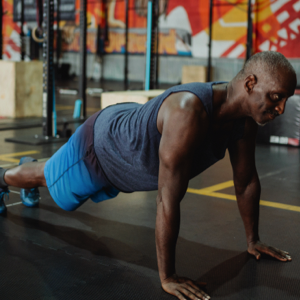In a world of high-tech exercise machines and flashy fitness trends, there’s a form of exercise that harks back to the basics – Calisthenics. Derived from the Greek words “kallos” (beauty) and “sthenos” (strength), calisthenics is a workout regimen that harnesses the power of bodyweight exercises to build strength, flexibility, and overall fitness. It’s an exercise approach that has stood the test of time and continues to gain popularity for its simplicity, accessibility, and transformative benefits. In this blog post, I delve into the world of calisthenics and explore why you should incorporate it into your fitness routine.
The Essence of Calisthenics
Calisthenics exercises primarily rely on using your bodyweight as resistance, making it a highly functional form of exercise. Push-ups, squats, lunges, planks, and pull-ups are just a few examples of the myriad exercises that can be performed without the need for expensive equipment or gym memberships. By mastering the art of calisthenics, you can sculpt a lean, strong physique and develop superior control over your body.
5 Benefits of Calisthenics
- Accessibility and Affordability: Unlike gym equipment, calisthenics can be practiced anywhere, anytime. Whether you’re at home, in a park, or on the road, you can engage in a full-body workout with minimal space requirements. No more excuses for skipping your workout!
- Functional Strength: Calisthenics exercises engage multiple muscle groups simultaneously, promoting functional strength that translates into real-life activities. By training your body to move as a cohesive unit, you’ll enhance your ability to perform daily tasks with ease and reduce the risk of injuries.
- Flexibility and Range of Motion: Many calisthenics exercises promote flexibility and improved range of motion. Moves like yoga-inspired poses, dynamic stretches, and bodyweight flows increase joint mobility and enhance overall flexibility, allowing you to move more gracefully and comfortably.
- Progressive Overload: Calisthenics provides endless opportunities for progression. As you become stronger and more proficient, you can modify exercises to increase the challenge. For example, you can elevate your feet during push-ups or perform one-arm push-ups. This adaptability ensures that you’re constantly pushing your boundaries and progressing toward your fitness goals.
- Core Strength and Stability: Calisthenics heavily emphasizes core engagement, leading to a solid and stable midsection. A strong core is not just aesthetically pleasing; it also improves posture, balance, and overall body control.
And one final bonus of Calisthenics is improved Mental Well-being. Engaging in regular calisthenics workouts can have a positive impact on mental health. Physical activity releases endorphins, the feel-good hormones, which can help reduce stress, alleviate anxiety, and improve mood. Additionally, the sense of accomplishment and self-confidence gained from conquering new exercises can boost self-esteem and overall well-being.
Calisthenics vs. Weight Exercises
Calisthenics exercises require a person use their own body weight to perform strength-training movements. Weight exercises, on the other hand, require a person use dumbbells or other weighted apparatuses to perform strength-training movements.
According to researchers, calisthenics and weight exercises produce similar physical results, at least in the short-term. For example, in one study researchers had 15 men follow a weight-based training workout and 17 men follow the U.S. Army’s calisthenics-based Standardized Physical Training program for 1.5 hours a day, five days a week, for eight weeks. At the end of the eight weeks, both groups’ fitness increased to a similar degree.
Calisthenics exercises appear to increase physical fitness to a similar degree as weight-based training exercises. The benefit of calisthenics over weight-based training exercises is that calisthenics requires little-to-no additional equipment — all you need is your body!
In Conclusion
Calisthenics offers a refreshing departure from the complex machinery and structured workouts commonly associated with fitness. By embracing this natural and effective exercise method, you can transform your body, develop functional strength, and enhance your overall fitness. Whether you’re a beginner or a seasoned fitness enthusiast, calisthenics provides a platform for continual growth, adapting to your abilities and allowing you to surpass your limits. So, kickstart your calisthenics journey, and let the power of bodyweight exercises unlock your true potential for a healthier, stronger, and more agile you.




